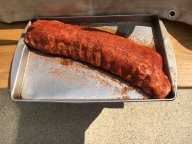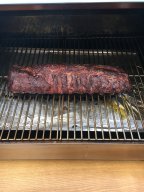dmatthews
Member
Need some help here. We’ve smoked St. Louis ribs using the 3-2-1 recipe now for the third time. Seem to get dry meat on the ends, and the “top” (top layer) of the rib is a little dry and stringy/tough. Even cut back on cook time to 2-2-45 minutes and same outcome. Nice smoke ring, not burned but same outcome. Once you get past the end ribs and through the top layer of meat, they’re pretty tasty, but disappointed in general with outcome.


